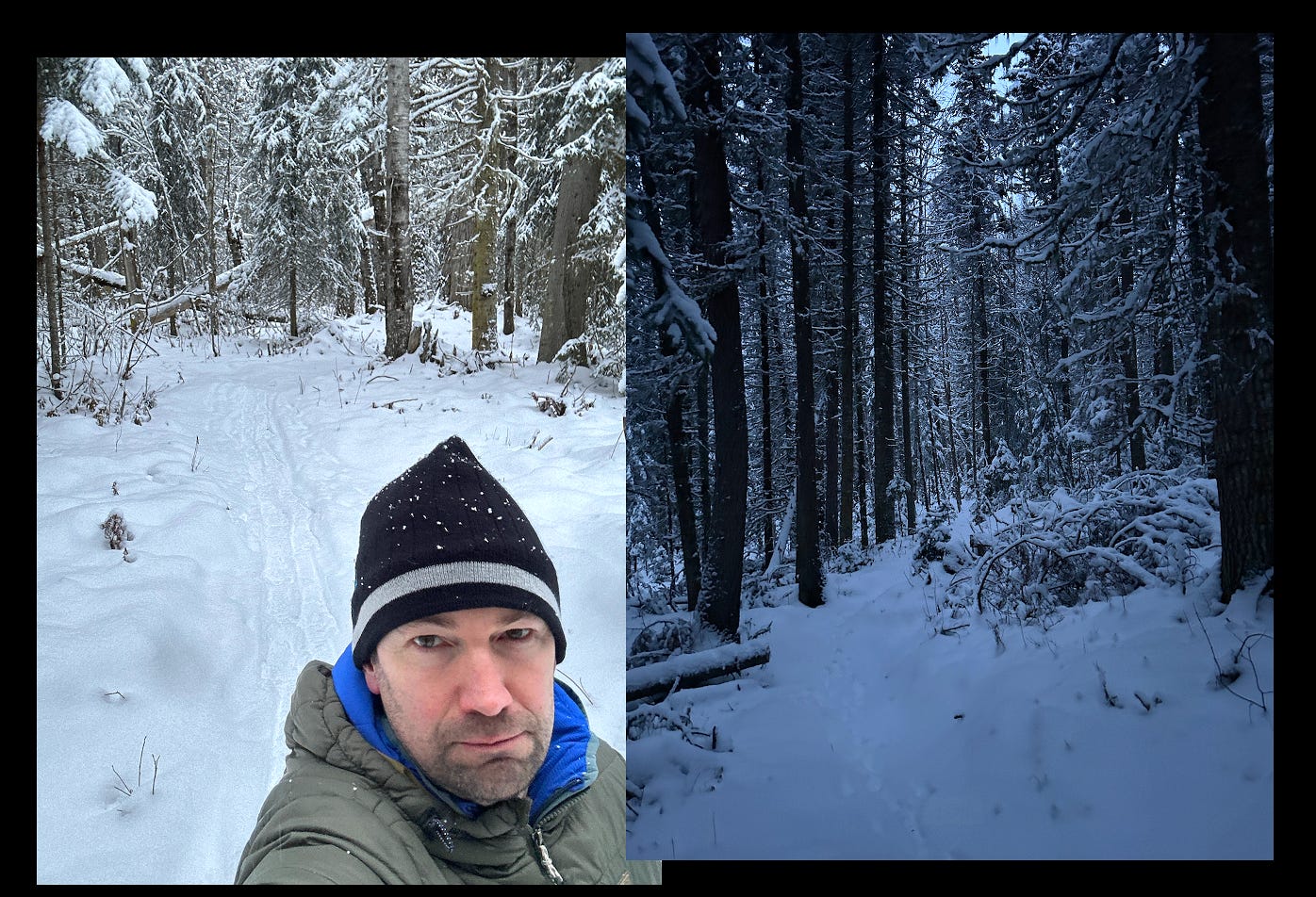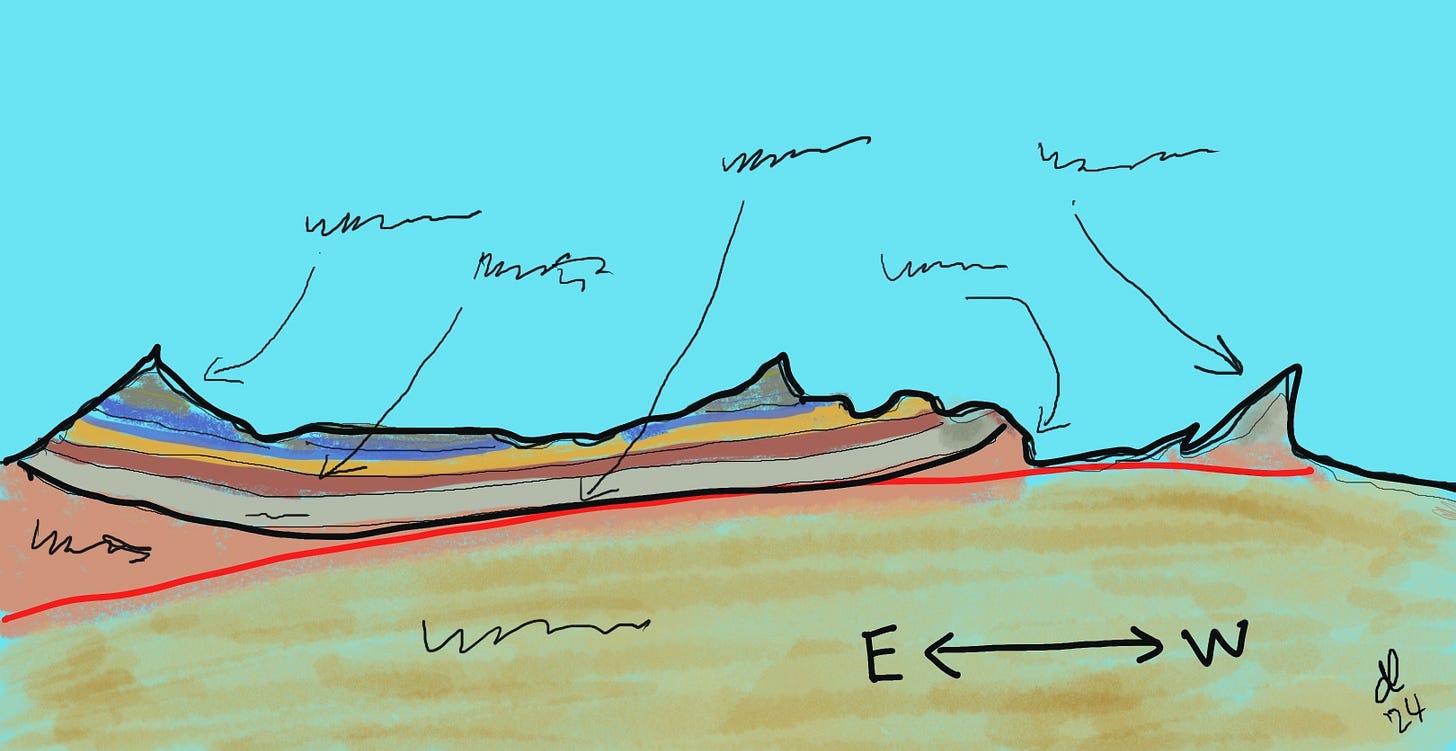Soul-Centred Navigation on an Always-Changing Map?
The Soulpreneur Series Free Issue No. 26
I once had a boss who said, “I love seeing bums in seats.” It wasn’t about the work—it was about fake appearances.
I left that toxic philosophy behind to build something more intentional and soul-centred.
When I left a decade+ career in 2022, I didn’t just walk away from a paycheque (and a ‘ladder’ I’d climbed some rungs up)—I also walked away from perceived safety nets of structure, predictability, and approval.
I also walked away from many toxic practices and folks in toxic stages of their lives.
And, in its place, I found something far more valuable: the chance to intentionally build and create things aligned with my soul.
Soulpreneurship
Yea, sure, some people will roll their eyes and scoff at the term.
So be it.
The heart of Soulpreneurship—is an intentional blend of values, soul, creativity and entrepreneurship. Doing this work as a business of one (the majority of my ventures these days) means I get to be a Soul Proprietor.
It’s not just about building and creating shit, but also how, why, and where.
While the journey and process are personal, I find some key elements necessary for any soul-centred venture. One of those is added flexibility in choices.
For example, yesterday afternoon, I traded my laptop for fresh snow, crisp mountain air, and the dying light of a short winter day here in western 🇨🇦.
Snowshoeing isn’t just exercise for me—it’s reflection and meditation in motion. It makes me better at what I do.
It’s where I can think deeply or think nothing at all, carried only by the rhythm of snowshoes (“quacker-whackers,” as I call them) and the muted silences of fresh snow in a quiet forest.
Winter is much quieter in the forests where we live. It’s not full of thousands of songbirds and the movement of critters of all shapes and sizes.
Designing Your Days
One of the perks of being self-employed is designing your days. Sometimes, you tackle deadlines, and other times, you step away to recharge. Yesterday was a bit of both for me.
I had a deadline for client work and got that nailed in the morning. So, in the afternoon, I took recharge time.
Yet, you don’t need to be self-employed to bring soul and intention into your career or creative projects.
There are ways to create space and build with intention, even amid career, family and other demands.
3 Systems for the Soul Proprietor
1. Reflective Systems
Building a creative business (even side gigs) starts with knowing yourself — or at least getting to know you better.
Reflection is not an optional luxury — it’s a foundational practice.
I use Learning Journals to map ideas, ponder or look for patterns, and refine and reflect upon decisions (to name a few uses).
My Learning Journals serve as a bit of a long-term compass, pointing toward actions aligned with my values and intentions — or not.
And, sometimes, I have a helper — this is our new kitten Richard 👇. He’s very helpful…
Reflective systems aren’t about perfect plans. They’re about helping you stay anchored in your “why” while navigating the inevitable uncertainties of building something new.
Combined with a world in constant flux.
In Living Between Worlds: Finding Personal Resilience in Changing Times (2020), long-time psychoanalyst and author James Hollis suggests the energy of change be reclaimed and redirected into meaningful action—not scattered in anxiety or busyness.
Having worked in public sector admin (higher education and healthcare), I’ve seen far more than enough wasted busyness and anxiety or worthless shit, flavours of the day, ‘planning’ that wasn’t planning (it was simply meeting to meet).
Engaging or wanting to engage in Soulpreneurship? Start with a simple question:
What am I building, and why does it matter? Why does it matter to me?
Write out or draw your answer. Revisit it weekly or monthly to see how it evolves. Make sure to date and write some notes when you revisit it.
2. Intentional Authenticity
Authenticity isn’t a buzzword — it’s intentional practice. To build something real, show up as you are.
This doesn’t mean broadcasting every thought—for me, it’s been about aligning work with values and trying to speak and write in my voice.
For me, intentional authenticity is constantly moving, ebbing, and flowing. The word “intend” means stretched and in-tension.
Building creative projects and things in the digital world means constantly balancing, like the pull of ‘comparison envy’ (e.g., seeing others' numbers of ‘likes’, followers, subscribers, etc.) with the grounding force of staying true to your unique voice and purpose.
For me, that means crafting intuitive systems, sharing stories honestly, and rejecting endless tail-chasing for validation through trends or metrics.
It’s trusting the right people will find me when I show up persistently (as consistency is often a bullshit term) as myself—without overexplaining or apologizing for gaps.
Through living an intentional life, I've found authenticity (with one’s self and others) becomes even more critical during significant or increased change.
Authenticity is less about perfection and more about alignment during times of significant change. It’s about finding your rhythm amid external chaos, whether by walking away from a career ladder or simply carving out moments to breathe, by walking.
Getting outside and staying active are critical cogs in those wheels.
Time to simply… be.
How about you?
Look at your current work. Is there one small way it could feel more “you”? Maybe it’s time to soften the edges, break the mould, or make your tone more honest.
Consider starting there and see where it takes you.
3. Building with Soul
Soul-guided ventures are about more than metrics. Yes, income matters, growth matters, and watching for signals in your posts and content is important.
But they’re not the sole measure of success, and definitely not of soul. A soulpreneurship venture is about personal purpose alongside profitability infused with soul and meaning.
Money (e.g. revenues) is simply an exchange of energy. It’s an exchange of one person’s value for another person’s.
For a Soulpreneur, this often means balancing the practical and the intangible: systems for efficiency, strategies for sustainability, and a deep connection to why you’re doing all of this in the first place.
For you?
Consider defining your “enough.”
What does success look like for you—financially, creatively, and personally? Write it down and revisit it often (leave yourself notes when you do)
Practices for Times of Change
Here are three additional practices I’ve found invaluable for navigating uncertain times:
Rest fuels creativity. Time away isn’t indulgence — it’s an investment. Stepping back to recharge allows ideas and energy to flow.
You define your rhythms. Even within rigid roles, finding your personal cadence—when to push and when to pause—can create balance and clarity.
Perspective shifts matter. Fresh air, new surroundings, or even stepping outside your usual routines can unclutter your mind and sharpen your focus.
Claiming the Language, Re-Mapping the Spaces
Soulpreneurship isn’t just a concept — it’s a movement.
It’s for those who reject shallow hustle and ‘productivity-obsessed’ and wasted ‘bums in seats’ culture and, instead, is about building with intention, in-tension, as well as with reflection and soul.
There is no “6 Simple Steps to Soulpreneurship” or other silly bullshit polluting many social media channels.
If it was ‘simple’ and had easy steps, why aren’t there hundreds of millions of Soulpreneurs or businesses of one?
The paths of Soulpreneurship are not easy, but damn rewarding. It’s about crafting creative lives and businesses reflecting your values, nourishing your soul, and contributing something meaningful to the world.
James Hollis writes and talks about how every transformation demands the collapse of what came before. The old maps are gone, and the new ones aren’t yet drawn.
In this in-between space is a deep need for creativity, resilience, meaning, and purpose.
It’s a fantastic opportunity — to not follow someone else’s path but create and design your own.
Something to Ponder
As you navigate this changing landscape, ask yourself: What will you build in the place of the old map?
Sketch your vision, write your thoughts, and revisit them often—because the map isn’t fixed, and neither are you.
That’s it for this issue. Thank you to those who have become paid subscribers. You are vital in supporting this work with some energy exchange.
If you are not a paid subscriber, please consider becoming one. The next issue of Box Cutter Co. will be out shortly.







